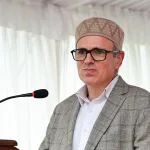Child labor —read the hard and heavy work for money done by the velvet and fragile hands of children— like many parts of the world has taken root in Jammu and Kashmir. Here the number of children, working as laborers in various sectors, is climbing. Though the back breaking labor is largely seen as an offence, it seems that we are yet not prepared to prevent it. Not to speak of abandoning it on ground level.
True, some parents’ abject poverty or lack of helping hands forces them to engage their children (even under teen age period) in the hard earning work. But, it is largely an act of sharing the burden or mere exploitation by society that children are seen engaged in hazardous labour in various social sectors. Take the horticulture sector. Hundreds of children these days are off schools into apple orchards, plucking apples from atop trees and carrying apple boxes. To shake walnuts loose, children can be seen on large walnut trees with a pole in hand. All for a few hundred rupees a day. Similarly, hundreds of minor children can be seen doing manual labor in Dhabas, restaurants, railway stations; working as drivers/ conductors and construction workers. Isn’t it at the cost of their health and happiness?
According to the United Nations figures, there are an estimated 152 million children in child labor; 72 million among them are in hazardous work. In the least developed countries, more than one in four children (ages 5-17) are engaged in labor seen as detrimental to their health and development. Africa ranks highest among regions of the number of children in child labor with the figures standing at 72 million. Asia and the pacific ranks second highest – 7% of all children and 62 million in total are in child labor in the region.
Together, Asia, Africa and the Pacific regions contribute nine out of ten children for child labor worldwide. The remaining number is provided by America (11 million), Europe and central Asia (6 million) and the Arab states (1 million). In terms of percentage, 5 % children account for child labor in America, 4 % in Europe and Central Asia and 3 % in the Arab states.
Official figures state that about five thousand children are laborers in JK but the independent surveys show that the number could be more than one lakh. As per the census of 2001, 175,000 child laborers were in J&K. According to a report on child labor in J&K, there are more than one lakh child laborers here, most of whom work in the handcraft sector, automobile workshops, brick kilns, in agriculture and as domestic servants in homes ; thousands of children here are seen working as vendors, bus conductors and auto drivers.
Arguably, it is extreme poverty— in the majority of cases— which pushes children into the bottomless pit of child labor, eating their health and snatching their right to education. And even if the minor laborers continue education while working, they fail to attend schools punctually and regularly. Parents cite various reasons for sending their children for earning money. Poverty, acquisition of skills, lack of quality education down to the inaccessibility of schools are said to be the major reasons.
While these are valid and sound reasons for parents to see their children doing labor when they should be at school, it is noteworthy that the parents cannot scapegoat the education, health and happiness of their child laborers for a few rupees. As parents, it is their duty and moral responsibility to look after their children well and ensure that they do not imprison themselves in illiteracy. Or miss schooling.
Children can be engaged in doing tasks which are not harmful to them but forcing them to do hazardous work though it affects their physical, mental and moral health is against the principles of child care and human rights. Many child laborers have suffered serious injuries. Recently, a minor child laborer driving a passenger auto rickshaw met with an accident. He broke his right leg and stayed in bed for about six weeks, losing both education and days of playing (which is essential for his psychological development).
Though no child would be happy to work as a laborer, it is the abject financial position, backwardness and low educational awareness of people in an area which have pushed children into the smithy of the painful labor. Moreover, the ongoing political situation here has added to the number of child laborers: thousands of children have lost their parents and guardians during the conflict and without a breadwinner, these children get trapped in the mire of child labor aimed at supporting their families.
Unfortunately child labor has struck deep roots in J&K in the presence of statutory laws; anti-child labor rights bodies and commissions. Educational institutions included. Thousands of children can be seen working at home as domestic servants, as carpet weavers, etc. and outside home in various other sectors. Can the society forget its duty against child labour? Unless people co-operate, child labour cannot smoothly go out of the way. Essential are the anti-child labour laws; not following them kills all efforts meant to uproot the social evil.
Preventing child labor is possible if both the society and state work together. But if they address it separately, we will end up in chaos. The government can launch child welfare schemes and rehabilitate child laborers; otherwise, the outcome can prove devastating. Parents, teachers and preachers can play a key role in closing the door on child labor; they can take care of a child’s health and education. Turning a blind eye to the humanitarian issue is an invitation to dark future. Should we not water the seeds of brilliant and bright future for our children?
(The Author is a teacher by profession and is RK columnist. Email: [email protected])





